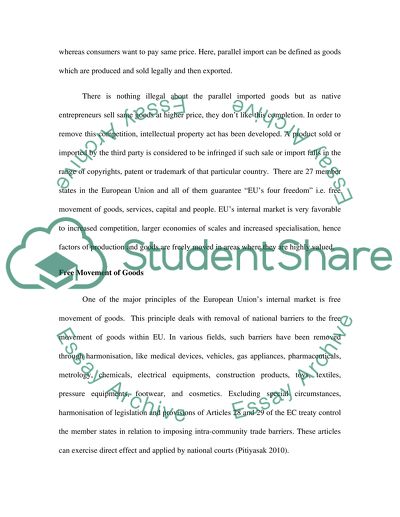Cite this document
(“Substantive EU Law-Free Movement of Goods and Parallel Imports Essay”, n.d.)
Substantive EU Law-Free Movement of Goods and Parallel Imports Essay. Retrieved from https://studentshare.org/law/1438138-substantive-eu-law-free-movement-of-goods-and
Substantive EU Law-Free Movement of Goods and Parallel Imports Essay. Retrieved from https://studentshare.org/law/1438138-substantive-eu-law-free-movement-of-goods-and
(Substantive EU Law-Free Movement of Goods and Parallel Imports Essay)
Substantive EU Law-Free Movement of Goods and Parallel Imports Essay. https://studentshare.org/law/1438138-substantive-eu-law-free-movement-of-goods-and.
Substantive EU Law-Free Movement of Goods and Parallel Imports Essay. https://studentshare.org/law/1438138-substantive-eu-law-free-movement-of-goods-and.
“Substantive EU Law-Free Movement of Goods and Parallel Imports Essay”, n.d. https://studentshare.org/law/1438138-substantive-eu-law-free-movement-of-goods-and.


